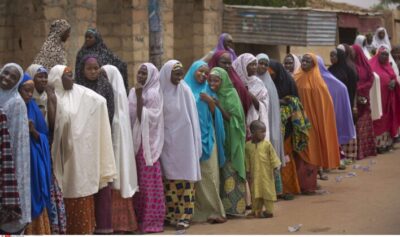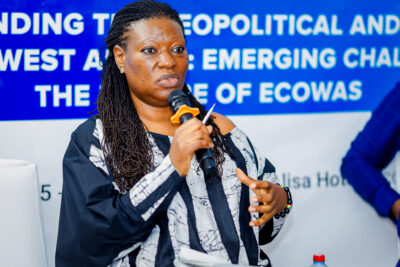My interest in China’s Muslim minorities began during my graduate studies when I participated in a project titled “Faith and Trust in the Emerging Market Economy of China,” convened between 2006-2008, that explored how religious beliefs and practices influence trust between individuals and institutions in China’s developing market economy. I saw through fieldwork in Beijing, Zhengzhou, and Guangzhou—cities with vibrant Islamic traditions that date back centuries—glimpses into the role faith plays in China’s Muslim communities. This immersive experience profoundly shaped my research agenda.
In late June 2013, I received an invitation from the editorial team at The Immanent Frame to contribute to an exchange on the future of religion in China. This invitation presented a timely opportunity to put China’s evolving domestic religious policies in conversation with the country’s growing ties with the Muslim world through trade and investment. Notably, the Chinese state leadership elected in November 2012 had just completed its first seven months. China stood at the precipice of its fourth decade of reform. Little did anyone know then that in the coming decade Beijing’s approach to religions would shift dramatically, alongside a significant reshaping of the global geopolitical order.
The first three decades of China’s reform era had seen a flexible approach to Islam, albeit with some exceptions. The Hui people, a well-integrated Chinese-speaking Muslim population, enjoyed relative freedom to practice their faith. This included government-facilitated participation in religious pilgrimages, demonstrating a willingness to accommodate established Muslim groups within China’s borders. However, tensions simmered in Xinjiang, home to the Uyghur minority. A Turkic ethnic group with distinct religious and cultural practices, the Uyghurs have a long history of resistance to centralized Chinese rule. Concerns about separatist movements and potential religious extremism fueled stricter government control in the region. Borrowing the dichotomous concept of “good” and “bad” Muslims popularized in Mahmood Mamdani’s 2005 book on the rise of political Islam, my intention at the time was not only to highlight Chinese state’s divergent approaches toward the Turkic-speaking minorities concentrating on the northwestern borderlands and the Hui sinophone Muslims scattering across China; I sought also to remind readers of the deep-rooted mistrust between these two ethnoreligious groups.
A few months after I wrote the essay for The Immanent Frame, President Xi unveiled the ambitious Belt and Road Initiative during his visit to Kazakhstan in September 2013. In the ensuing decade, while seeking to expand its global engagements, the Chinese state has tightened its domestic control, especially over ideologies and religions that could potentially challenge its legitimacy. Around 2016, China’s policies regarding religious affairs, particularly those concerning Uyghurs in Xinjiang, underwent a drastic transformation. Xi Jinping’s leadership ushered in an era of tighter control and a more assertive implementation of sinicization. Still in effect, this policy requires that religions align with Chinese culture, as defined by the Chinese Communist Party. As a result, restrictions on religious expression have intensified. Public displays of faith are often forbidden, and Islamic dress and practices are increasingly targeted. Mosques with traditional Islamic architecture are being forcibly remodeled to resemble Chinese built forms, while a pervasive surveillance network monitors Muslims. Traditional Uyghur cultural practices also face discouragement or outright bans. Widespread reports indicate the existence of detention camps holding potentially millions of Uyghurs, subjected to forced labor, indoctrination, and alleged human rights abuses.
China’s increasingly severe measures in Xinjiang are driven by a confluence of factors. The Chinese government cites the need to combat terrorism, separatism, and religious extremism. However, critics argue that these policies risk inflaming resentment and fueling potential unrest. This harsh crackdown has drawn mounting international pressure, with accusations of crimes against humanity and genocide leveled by Western nations and human rights organizations. This creates a complex geopolitical situation as China seeks to expand its economic collaborations with Muslim-majority states under the framework of the Belt and Road Initiative.
Despite criticism of its Xinjiang policies, Arabs tend to view China positively. This is due largely to robust economic ties; China has become the top trading partner of major Gulf states like Saudi Arabia and the United Arab Emirates. Beyond trade, China is playing a more assertive role in Middle Eastern politics, notably brokering the 2023 Saudi-Iranian deal and facilitating the entry of Saudi Arabia and the UAE into the BRICS economic group.
China’s growing influence is not without challenges. It must maintain strong economic partnerships with the Muslim world while deflecting criticism over its Xinjiang policies. Domestically, the government grapples with a slowing economy, demographic shifts, and the lingering effects of the COVID-19 pandemic. Globally, China is confronting restrictions and containment led by the United States at a time when Americans feel threatened by China’s rise and their own waning influence in the world. How Beijing navigates this intricate landscape, negotiating internal challenges and the continuing international scrutiny surrounding Xinjiang, will undoubtedly shape China’s future relations with the West and the Muslim world.
The essay below was originally published on The Immanent Frame on October 8, 2013.
* * *
The slim crescent that rose above the skyline on July 9th signifies the beginning of this year’s holy month of Ramadan in the United Arab Emirates (UAE), where I have been teaching for the last four years. Pious Muslims abstain from food, drink, smoking, sex, swearing, and other unlawful behaviors from dawn to dusk, following the traditions of the Prophet to get closer to God. During this sacred month of spiritual renewal, the ritual of sharing food after sunset, known as Iftar, serves important social functions such as bringing families together and reinforcing community bonds. As the last strands of sunlight disappear from the horizon, many celebrate the day by enjoying a lavish dinner with friends and family. In the UAE, as everywhere else, Iftar parties have also become an opportunity for Muslims to reach out to non-Muslims and for non-Muslims to reciprocate the hospitality.
I have been fortunate enough to attend a number of Iftars parties this Ramadan, hosted by several institutions, both secular and religious. The most recent Iftar party that I attended was hosted by the Chinese Consulate General in Dubai, in a popular family restaurant situated on the legendary Sheikh Zayed Road. To strengthen the Unified Front and in the interest of building harmonious relationships among Chinese communities overseas, the Consul General extended invitations to more than 150 Chinese expatriates from various walks of life and different ethnic backgrounds, both Muslims and non-Muslims. While touring the dinner tables and greeting the attendees, the Consul General specifically requested that a journalist from the Hong Kong-based Phoenix Satellite TV photograph him shaking hands with the representatives of Uyghur and Hui communities. To maintain “harmonious” ethnic relations among the more than 200,000 overseas Chinese expats in the UAE—a popular destination of emigration for China’s Muslim minorities—it is imperative to make sure that Uyghur, Hui, and other ethnic Muslims get along well with the Han majority.
During the last decade, China has become the second largest trading partner of the UAE. Negotiations between China and the Gulf Cooperation Council (GCC) to establish a Free Trade Agreement accelerated following the six-day visit of former Chinese Premier Wen Jiaobao to Saudi Arabia, Qatar, and the United Arab Emirates in April 2012. The growing economic ties between the two countries have paved the way for social and cultural exchanges. China’s leaders have become acutely aware of the potential importance of China’s twenty million Muslims for building a strategic relationship with the Middle East. Although their influence should not be exaggerated, China’s Muslim entrepreneurs and the resources of Islamic communities have become increasingly important assets in economic collaborations between the two partners. The recently established Inland Opening-Up Pilot Economic Zone in Ningxia Hui Autonomous Region attests to the growing economic importance of China’s northwestern region, in which many of the country’s Muslims are concentrated. Given the strategic significance of GCC countries and of the Middle East in general, it is no wonder that the Chinese Communist Party (CCP) is gambling with its Muslim card.
Islam was introduced to China during the Tang Dynasty by Persian and Arab merchants and traders who first arrived in the southeastern coastal cities of Quanzhou, Changzhou, and Guangzhou, and in the ancient Capital of Chang’an. The emperors ordered to build magnificent mosques, creating a relatively independent cultural space for foreign Muslims gradually to adapt to Chinese society. Their descendants have played important roles in China’s international trade throughout history. Nevertheless, embracing a monotheistic faith that remains strange to the majority Han people, whose religion is best described as “diffused,” China’s Muslims have been systematically marginalized despite the continual efforts of both Confucian and Muslim scholars to integrate Islam and Confucianism. During the last 1,400 years, China’s Muslims have sustained unimaginable hardships as both religious and ethnic minorities in a Han-dominated society. They have at times challenged, and sometimes openly rebelled against, the Chinese state, but they have also collaborated with it to maintain order within the territories designated for Muslims. During the early twentieth century, for instance, the Muslim warlords who controlled the vast northwestern region often helped the central government to ward off common enemies.
When the CCP ascended to power in 1949, the rhetoric of building a multinational state led to the formation of new ethnic and religious policies. To serve its atheist ideology, the CCP categorized Muslims into ten ethnic groups (Bao’an, Dongxiang, Hui, Kazakh, Kyrqyz, Salar, Tajik, Tartar, Uyghur, and Uzbek), thus effectively transforming religious issues into ethnic ones—an intervention that would later generate mistrust among the Muslim. Notably, it has been the cause of estrangement between the largest Muslim ethnic minority, the Hui, and the dominant ethnic group in the Xinjiang Autonomous Region, the Uyghur. China’s leadership, however, is seasoned in the ancient strategy of “playing one barbarian group against another.” As made clear by a number of recent incidents in Xinjiang Province, the Hui has acted as the patriotic Muslims, fit to represent Islam in China, while the Uyghur separatists have been labeled “bad Muslims” and placed under the category of “Islamic terrorists.” The use of ethnonyms by the mass media, moreover, has instilled a sense of fear among rival communities, which in turn has helped justify the militarization of the police force in Xinjiang.
The CCP has also utilized the global anti-terrorism campaign being conducted by various states, both Western and non-Western, to maintain its control over Xinjiang. Any anti-government activities in Xinjiang, in short, can be purported to be tied to terrorism. In a global climate that tends to be hostile towards Islam and Muslims, it is a risky business, to say the least, for China to exert such heavy control over Muslims in Xinjiang while allowing frequent exchanges between its domestic Muslims and foreign Islamic institutions to take place.
After the Cultural Revolution, the CCP loosened restrictions on religious activities, which to some extent has allowed various religious traditions to be revived. As one of China’s five official religions, Islam has gained much vigor in the three decades since the reform. In the process of urbanization, for example, rural Muslim migrants reenergized existing Muslim communities in cities like Guangzhou. New Muslim communities in urban centers have also grown at an unprecedented rate. The growing ties between Chinese Muslims and the heartland of the Islamic world are deemed useful within the framework of “building the religious/cultural stage to sing the economic opera” (文化搭台,经济唱戏). Hui Muslims, as the largest Muslim ethnic minority, have particularly benefited from the tide of religious revival and have played an important role in micro-level business activities in the China-Middle East trade because of their religious affinity and knowledge of Arabic. At the same time, their biological and linguistic proximity to the Han majority and their scattered residential pattern distinguish them strongly from the Uyghur. The Hui are much more integrated into Chinese culture than the Uyghur, economically better off, and exhibit no desire for independence. They are the “good” Muslims.
China’s double standards may yet backfire, however. In the case of the UAE, some prominent academics have clearly expressed worries regarding China’s positions on Middle Eastern issues. The sincerity of China’s desire to develop an equitable and mutually beneficial relationship with the Emirates indeed becomes questionable when it proscribes Muslims in Xinjiang from observing Ramadan, performing Hajj, and other important pillars of Islamic faith. From a politically realistic perspective, the UAE is keener on cultivating close relationships with South Korea. Besides the nuclear plant deal between Abu Dhabi and Seoul , the two have also consolidated their growing ties by furthering their military collaborations.
China’s policies in Xinjiang and toward Uyghur Muslims in general have important implications for its developing relations with the oil-rich states of the Arabian peninsula. If one is concerned the future of Islam in China, I would suggest that one take seriously these new developments both inside and outside China. As China pursues a more substantial status in the Middle East, it is likely to continue to differentiate at home between “good” and “bad” Muslims, exploiting a global climate of Islamophobia to protect its own territorial integrity. Meanwhile, it would also maintain a relatively open and friendly attitude toward Islam and Muslims abroad, so as not to jeopardize its delicate relations with the Islamic world. How long the balance will hold remains to be seen.
[In conjunction with this series of essays on the state of religion in China, we have published a companion piece on the history of religion in China, written by The Immanent Frame‘s Wei Zhu. Read What is religion in China? A brief history.—eds.]












